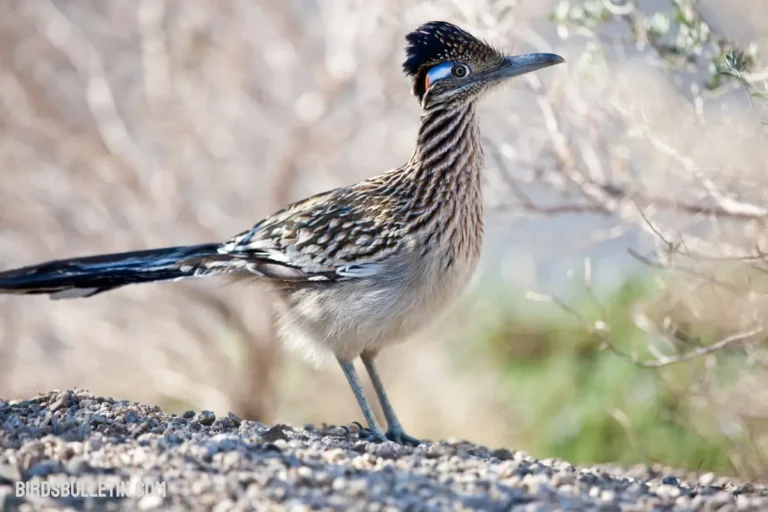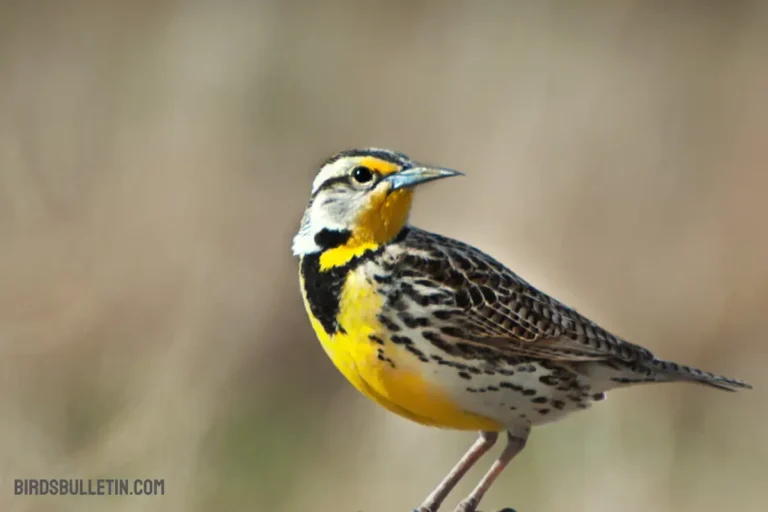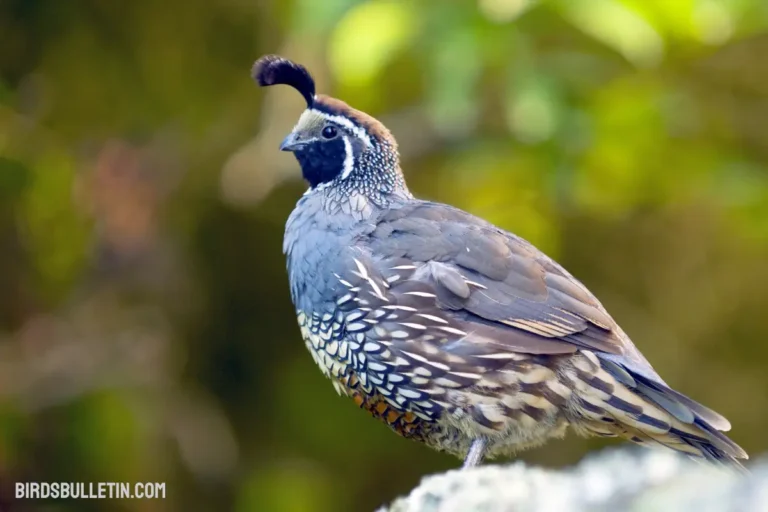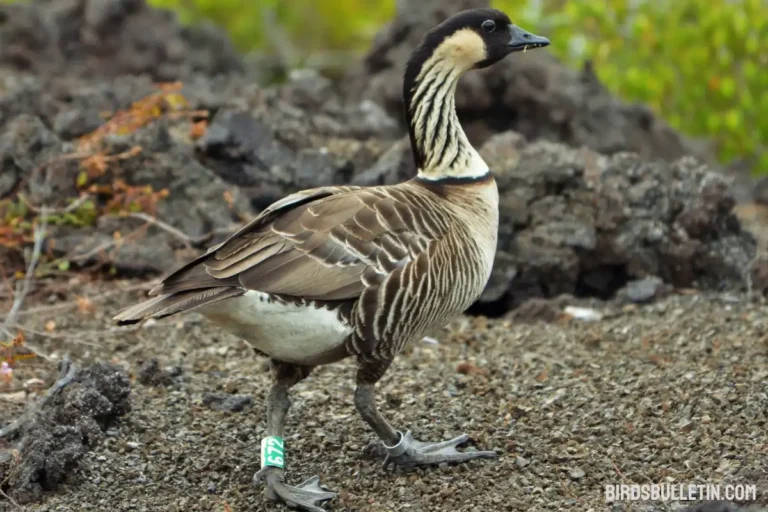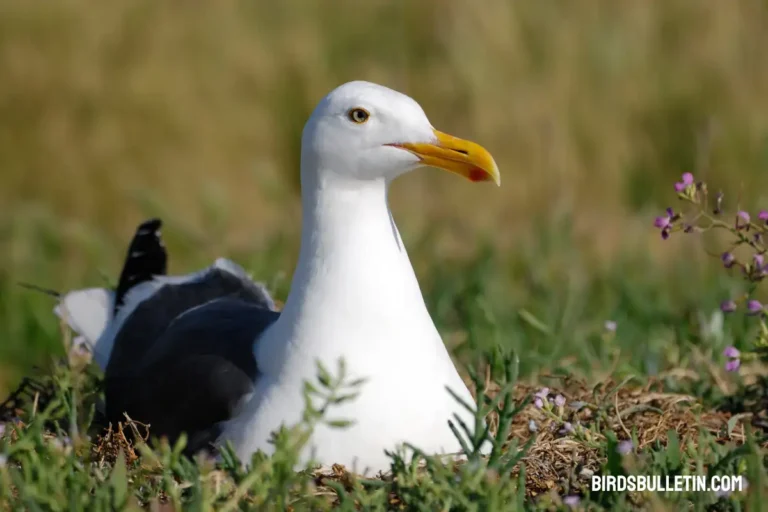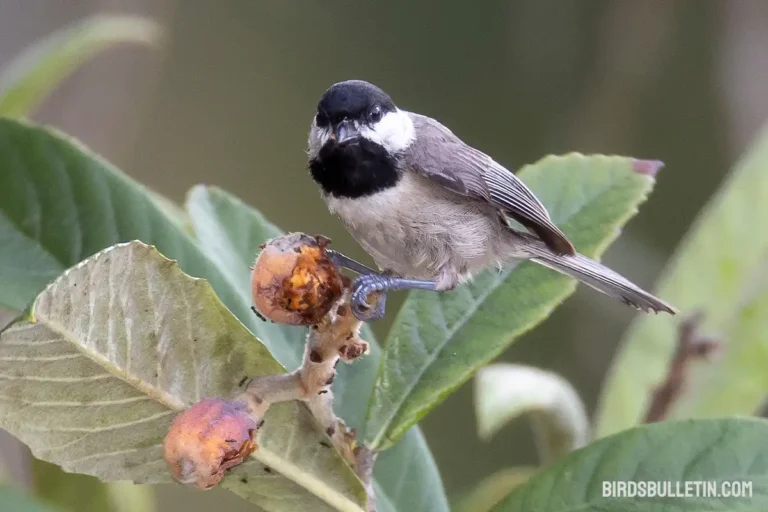Hermit Thrush Overview: Songsters of the Forest
Named for its shy and solitary tendencies, the hermit thrush (Catharus guttatus) is a beloved North American songbird known for its flute-like vocalizations.
As one of the most melodious birds of the woods, early observers likened these birds to musically gifted hermits dwelling deep in forest seclusion, and the name stuck ever since.
Want to learn more about Birds Overview
Identification Step-by-Step
Identifying the Hermit Thrush involves a keen observation of its distinct features. Whether you’re a novice birdwatcher or an experienced enthusiast, follow these steps to recognize this captivating songbird.
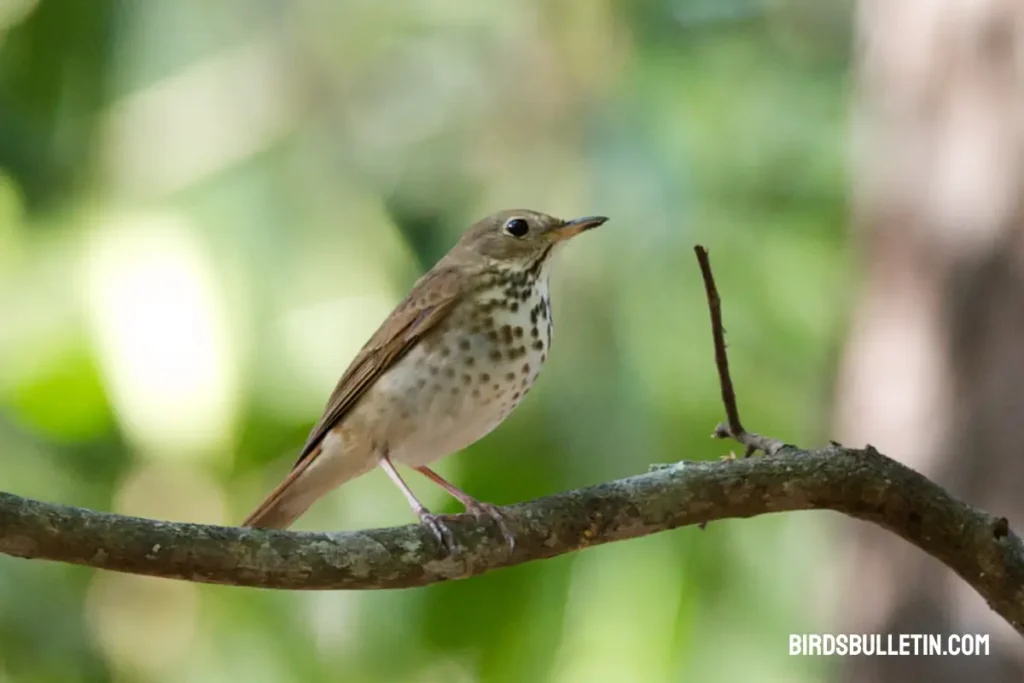
Step 1: Size and Shape
Hermit Thrush size is similar to that of a Robin, making it easily distinguishable from smaller passerines. Take note of its rounded body shape and relatively long tail, traits that contribute to its graceful appearance in flight.
Step 2: Plumage Coloration
The Hermit Thrush exhibits a combination of subtle yet distinctive colors. Look for:
- Olive-Brown Upperparts: The bird’s back and wings display shades of olive-brown, providing excellent camouflage in its woodland habitats.
- Rufous Tail: A key identifier is the warm, rufous, or reddish coloration on the tail. This feature becomes especially prominent when the bird is in flight.
Step 3: Facial Features
Focus on the facial characteristics that set the Hermit Thrush apart:
- Eye Ring: A faint, incomplete eye ring may be visible, emphasizing the bird’s alert expression.
- Spots on the Breast: Look for small, round spots on the white or buff-colored breast. These spots may vary in intensity among individuals.
Step 4: Song
Observing the bird’s behavior and listening to its song can provide additional clues:
- Song: While visually identifying the bird is crucial, the Hermit Thrush’s song is distinctive—a series of flute-like, ethereal notes that contribute to its enchanting presence.
Hermit Thrush Profile
| Feature | Hermit Thrush |
|---|---|
| Scientific Name | |
| Alternative Name | |
| Color | |
| Size | |
| Wingspan | |
| Weight | |
| Lifespan | |
| Breeding Season | |
| Lay Eggs | |
| Diet and Prey | |
| Threats and Predators | |
| Locations |
State Bird and Symbol
In Vermont, the official state bird is the Hermit Thrush (Catharus guttatus). A petite brown bird, adorned with a spotted breast and russet tail, it serenades with a melodious, flute-like song, earning it the endearing moniker, the American nightingale.
Subspecies of Hermit Thrush
Ornithologists recognize eight or nine subspecies of the hermit thrush occurring in different regions across North America. These include:
- Catharus guttatus auduboni
- Catharus guttatus crymophilus
- Catharus guttatus faxoni
- Catharus guttatus guttatus
- Catharus guttatus nanus
- Catharus guttatus polionotus
- Catharus guttatus sequoiensis
- Catharus guttatus slevini
Nesting
Hermit thrushes breed in forested areas across Canada and the mountainous U.S. states. After mating in early spring, females construct a sturdy cup nest using grasses, moss, bark, and conifer needles placed on a tree branch or shrub up to 16 ft high.
The female then lays 3-5 light blue eggs with brownish spotting. After about 12-14 days of incubating, the eggs hatch over several days. Both parents feed nestlings with insects and fruit for another 12-15 days until fledging.
Habits
During breeding season, hermit thrushes forage by hopping along forest floors flipping leaves to catch insects and occasionally fruit. In migration and winter, they broaden their habitats to include forest edges, parks, and backyards.
Their diet consists mainly of insects and berries supplemented with seeds, nuts, and sap. Rarely spotted when not singing, they spend much of their time out of sight below eye level rustling through lower vegetation.
Population
As per information from Partners in Flight, the Hermit Thrush boasts a substantial breeding population, estimated at 72 million breeding birds. These conservation scores consider the species secure overall.
However, exact trends vary at regional scales with steep declines in parts of Canada while coastal U.S. forests support rising numbers.
Migration
Northern hermit thrushes migrate south to overwinter across the southern half of North America down into Central America.
These long movements occur at night in loose flocks; by day the birds rest and feed in woodlands along migration routes. They return quickly north each spring, targeting former breeding sites.
Behavior
The behavior of the Hermit Thrush is as intriguing as its melodious song. Here’s an overview of key behavioral aspects:
Foraging Habits: Hermit Thrushes are ground foragers, adept at hopping and scratching through leaf litter in search of insects, spiders, and other small invertebrates.
Territorial Nature: During the breeding season, Hermit Thrushes can exhibit territorial behavior, defending their nesting territories from intruders.
Mating Rituals: The courtship rituals of Hermit Thrushes involve both visual displays and vocalizations. Males may perform fluttering flights or sing from elevated perches to attract potential mates.
Adaptability: Hermit Thrushes exhibit adaptability in their choice of habitats. While they favor moist woodlands during the breeding season, they can be found in a variety of environments during migration, including gardens, parks, and scrubby areas.
Interhuman Connection
Beyond treasured backyard encounters, hermit thrushes offer various bonds with human society:
- Featured in novels, poems, artworks, and music as symbols of ethereal beauty
- Tourism appeal for birding in northern parks and forests
- Seed dispersers supporting understory plant growth
- Mirror peaceful solitude found in nature
- Represent northern wilderness in state symbolism
Conservation Status
With large overall numbers and expansive breeding range, the hermit thrush remains a species of Least Concern on the IUCN Red List. Local declines merit monitoring of regional populations and protection of boreal nesting habitats.
Legal Protections
Migratory populations receive legal safeguards under the U.S. Migratory Bird Treaty Act and Canadian Migratory Birds Convention Act restricting harm and nest disturbances.
National parks and reserves shelter northern breeding areas. Various states classify them as protected songbirds.
Frequently Asked Questions
01. How do hermit thrushes create different songs?
Males possess specialized vocal tract organs allowing them to layer phrases in complex arrangements, incorporate new sounds, and accentuate harmonics producing a unique flute-like tone.
02. How do hermit thrushes survive cold winters?
Strategies include growing thick downy feather layers for insulation, hunkering below snow level, entering nightly hypothermic states to conserve energy, flocking for shared shelter and heat, and migrating southward to reduce severe weather exposure.
03. Why is the Hermit Thrush Called the “Solitaire Thrush”?
The Hermit Thrush is sometimes referred to as the “Solitaire Thrush” due to its solitary nature and preference for secluded habitats. This alternative name reflects its tendency to avoid crowded or social environments.
Final Word
With cryptic habits wrapping an eloquent musical gift, hermit thrushes emblemize poetry woven through northern forests.
Protecting their boreal breeding havens allows these supreme songsters to persist as icons of wilderness serenity for generations to come.
References
- Cornell Lab of Ornithology. Hermit Thrush Life History.
- Palmer-Ball Jr, B.L. (1996). The Kentucky Breeding Bird Atlas. University Press of Kentucky.
- Sibley, D.A. (2014). The Sibley Guide to Bird Life and Behavior. New York, NY: Alfred A. Knopf.


